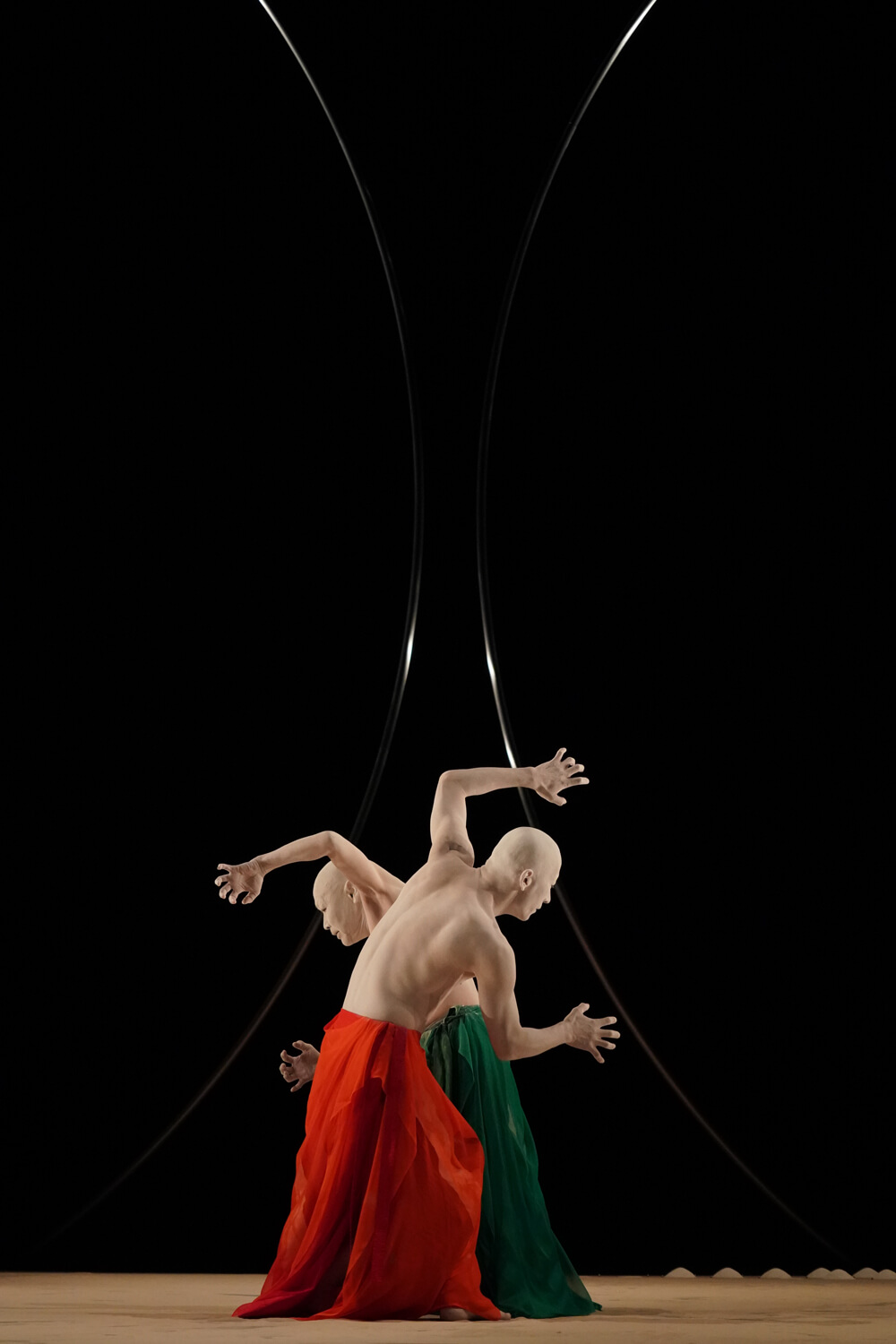An Homage to Dawn and Dusk Through Dance
‘Arc – Chemin du Jour’, a butoh dance piece by choreographer Ushio Amagatsu, was unveiled at a world exclusive in Paris in April 2019.

© Théâtre de la Ville
Darkness. Light. Bodies appear onstage at the Théâtre de la Ville, covered in white powder, almost naked, catching the eye. They move slowly, enunciate each movement, analyse it as if to find its essence. Then, all of a sudden, they twist. The movements that make up this choreography are often unexpected. This is the principle of butoh, a radical form of contemporary dance in which bodies and faces twist to express their emotions in gestures that are sometimes minimalist and other times expressionist. Born out of the ashes of post-war Japan, butoh expresses the idea of nothingness and the death wish of a population left disorientated by defeat and the atomic bomb.
Importance of nature
Part of the second generation of butoh dancers after founders Kazuo Ono and Tatsumi Hijikata, Ushio Amagatsu formed his dance company Sankai Juku in 1975. This ‘studio by the mountain and the sea’, two fundamental elements in Japan, places nature at the very heart of its performances. In Arc – Chemin du Jour, which ran from April to May 2019, it is dawn and dusk that are showcased by the seven dancers in this ‘chemin du jour’, a ‘path of day’, which transports the audience to a different time.
The emotion that emanates from the purity of the gestures, and more particularly from the meticulous execution of ports de bras, coupled with the exaggerated facial expressions and traditional steps, lends a hypnotic quality to the performance. This is all the truer due to the starkness of the staging and the minimal nature of the accessories, which showcase the virtuosity of the performers. For the first time, Ushio Amagatsu was not with them onstage.
Arc – Chemin du Jour (2019), a piece choreographed by Ushio Amagatsu, was performed at Théâtre de la Ville in Paris in April and May 2019.

© Théâtre de la Ville

© Théâtre de la Ville

© Théâtre de la Ville

© Théâtre de la Ville

© Théâtre de la Ville
TRENDING
-
The Tattoos that Marked the Criminals of the Edo Period
Traditional tattoos were strong signifiers; murderers had head tattoos, while theft might result in an arm tattoo.

-
Chiharu Shiota, Red Threads of the Soul
Last year, more than 660,000 people visited the retrospective 'Chiharu Shiota: The Soul Trembles' exhibit at the Mori Art Museum.

-
‘Before Doubting Others, Doubt Yourself. Who Can Truly Say a Dish Isn’t What It Used to Be?’
In ‘A Non-Conformist’s Guide to Surviving Society’, author Satoshi Ogawa shares his strategies for navigating everyday life.

-
The Story of Sada Yacco, the Geisha who Bewitched Europe
Described by Dazed magazine as the first beauty influencer, she has been restored to her former glory since 2019.

-
Ito Jakuchu's Naturalist Paintings
From 15 September until 14 October 2018, the Petit Palais showcased the artist's iconic ‘Images of the Colourful Realm of Living Beings’.





